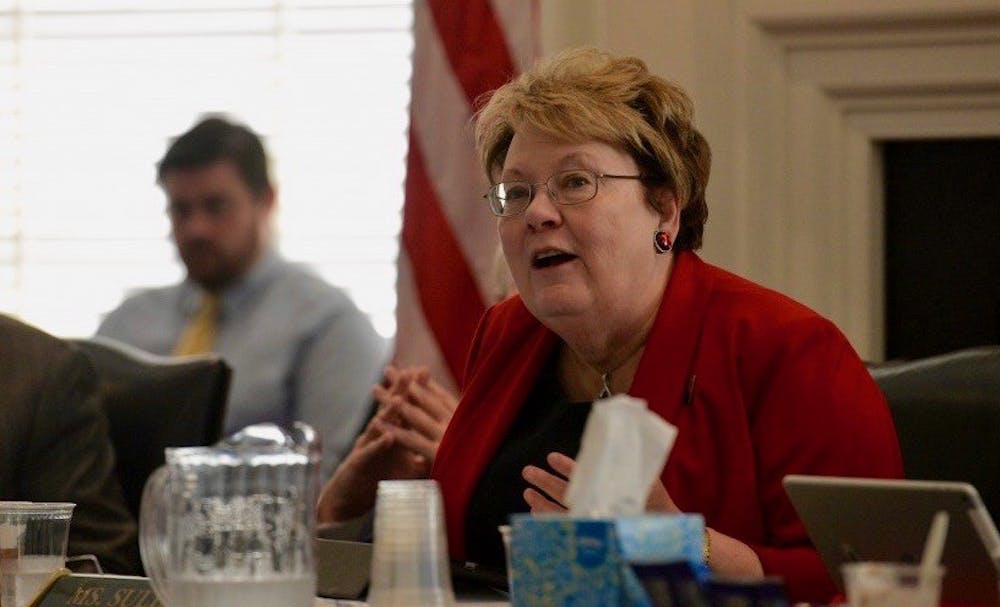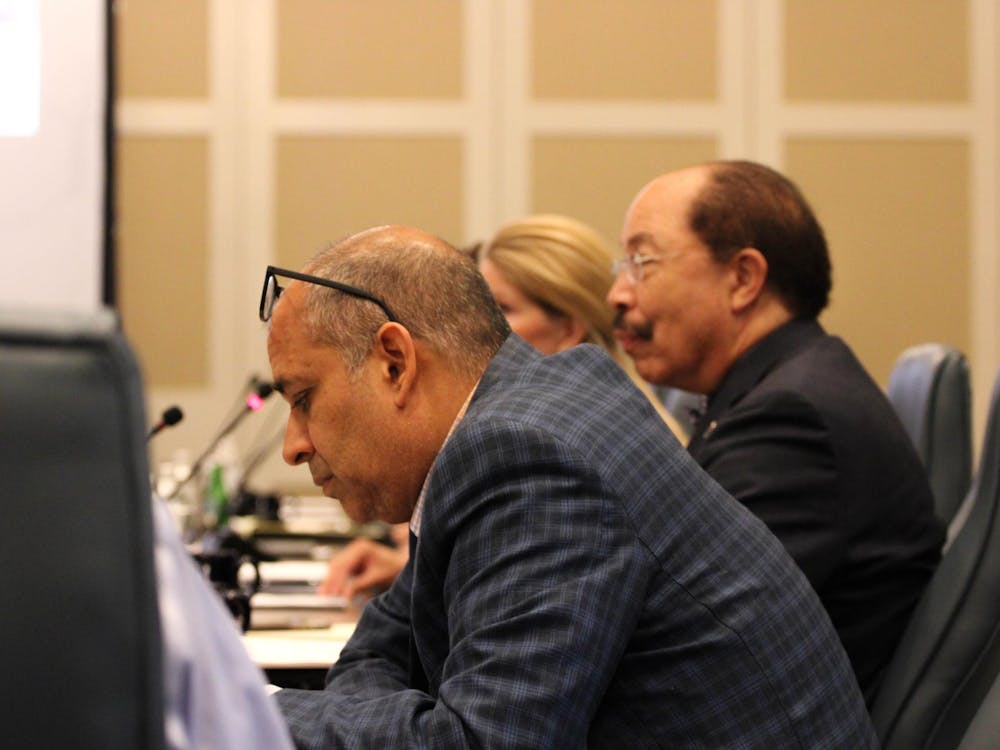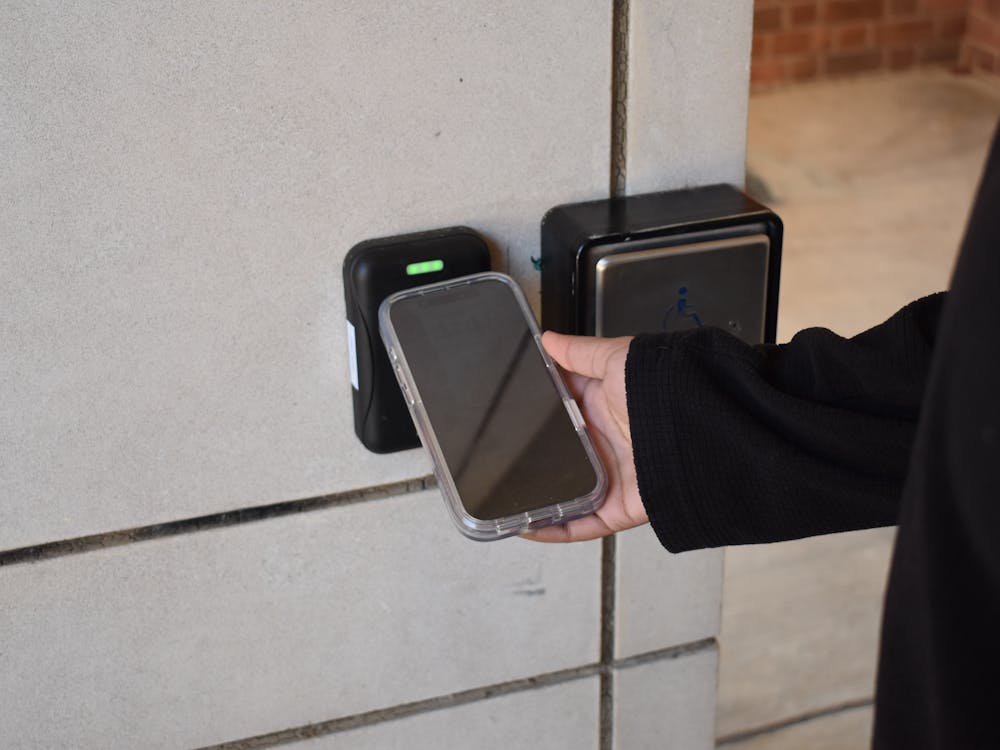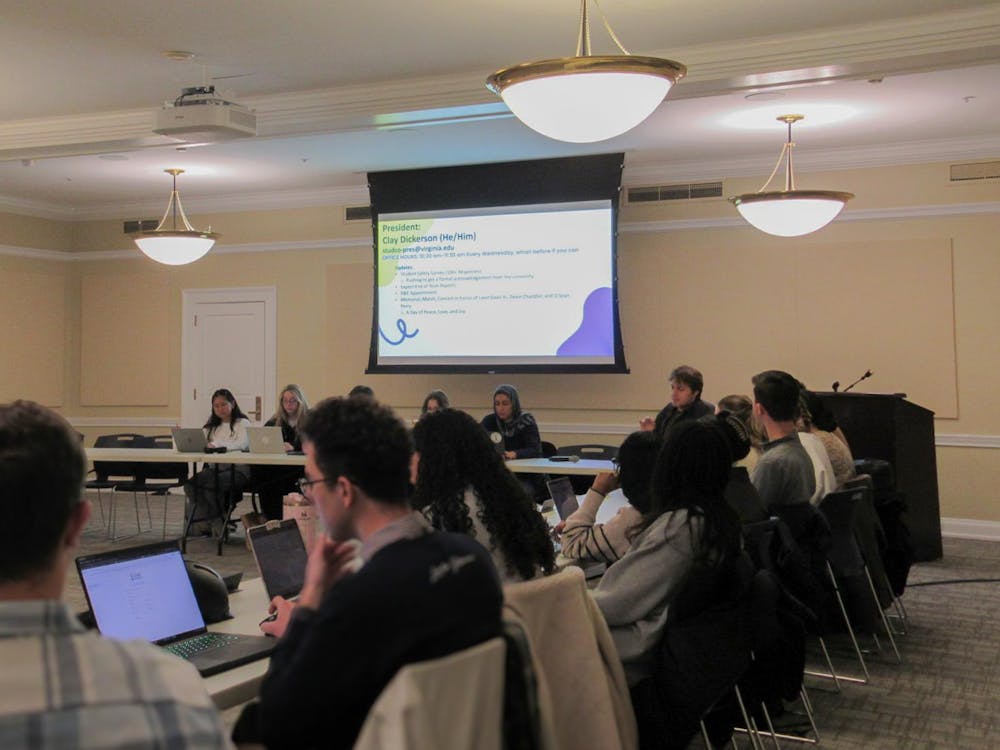Outgoing University President Teresa Sullivan delivered her final remarks as president to the Board of Visitors at the full body meeting of the board earlier this month amidst much applause from board members. The June 8 board meeting was Sullivan’s last one as president of the University as her contract will formally end July 31.
Sullivan announced her decision to leave her position as president in January 2017. Sullivan — the first woman elected president of the University — will take a research leave at the University of Texas with her husband, Law Prof. Douglas Laycock, before both return as faculty members at U.Va.
President-elect James E. Ryan — a Class of 1992 graduate of the School of Law who also taught there from 1998 to 2013 — will assume the presidency effective Aug. 1. Ryan, the current dean of the Harvard Graduate School of Education, was unanimously elected by the Board last September.
During her closing remarks, Sullivan said the University has been committed to serving the world through its students regardless of the challenges she and the University faced during her time as president.
“Obviously together we’ve experienced some terrific high points and also some very low points,” Sullivan said. “I think that what’s been impressive about us is that that roller coaster has not been allowed to divert us from our central mission, our task we seek to do — which is to improve the Commonwealth and the world through our students.”
Sullivan also spoke extensively on the threats facing public higher education, and how she believed the University was effectively dealing with them.
“I do want to leave you with an important question — it’s a durable question, and it's one we’re going to have to continue to wrestle with in the future,” Sullivan said. “‘Can U.Va. continue to be both public and excellent in the future?”
“I've worked hard to make sure that the answer is yes over the last eight years,” she added. “But it will require diligence on the part of the board and on the part of every U.Va. leader in the future.”
Sullivan said while there are many short and long term threats to public higher education, that calls for greater state regulation are not the answer — particularly with regards to student debt policy.
“This particular problem [student debt] stems mainly from the rise in private, for-profit schools that saddle students with enormous debt and often give them a mediocre education at best,” Sullivan said. “The public loses sight of that — that U.Va. caps student debt, and one-third of our students who do have debt upon graduation have less than either the national or state average.”
Sullivan said the University — when faced with sharp state budget cuts in the early 1990s — was able to maintain both the academic excellence and affordability of the University through private philanthropy and alumni donations.
“I think we have a duty to the Commonwealth to take seriously our mission as a public university, but our duty to the Commonwealth is best carried out when we’re also trying to be excellent,” Sullivan said.
Sullivan concluded — despite the numerous challenges which she said American higher education institutes face — that the University has not experienced the same struggles as a result of generous philanthropy and donations.
“To be both public and excellent in today’s challenging environment of public higher education seems to represent a paradox because the demands seem to be in conflict — irreconcilable and unresolvable,” Sullivan said. “Faced with an apparent paradox, U.Va. has made great progress in recent years.”
During a dramatic series of events in June 2012, Sullivan was ousted by the Board of Visitors, largely due to the efforts of former rector Helen Dragas. The unexpected resignation, however, resulted in backlash and protest from faculty, alumni and students, leading to her reinstatement.
Sullivan’s tenure as the University's president has been an eventful and often tumultuous time for her and the University. During her time as president, the University witnessed the disappearance and death of second-year student Hannah Graham, the release of Rolling Stone’s article about an alleged gang rape that has since been retracted and the bloody arrest of then-third-year student Martese Johnson in the spring of 2015.
Sullivan and University administration more broadly have also been sharply criticized by students, faculty and the local Charlottesville community for their response to a white nationalist torch-lit march through Grounds led by Unite the Right rally organizer Jason Kessler on the night of Aug. 11, 2017.
According to an independent review led by former U.S. Attorney Tim Heaphy of the local response to the events of Aug. 11 and 12, University officials failed to effectively prepare for the event and prevent violence between demonstrators and counter-protesters despite ample notice that such an outcome was possible.
Board member Tammy Murphy read aloud a resolution commending Sullivan for her time as president and electing her as ‘president emerita’ — an honorary designation which will allow Sullivan to retain the title of president. Sullivan will also be commemorated with a to-be-determined structure named in her honor as part of the redevelopment of the Ivy-Emmett corridor.
“Over the past eight years, President Sullivan has guided the University through a period of growth and progress,” Murphy said. “She has preserved the University’s most cherished traditions while embracing innovative change to move the University forward.”
During his remarks, Rector Frank M. “Rusty” Conner said Sullivan’s time in office has prepared the University to enter its third century with great momentum.
“Resiliency — she is the definition of that,” Conner said. “She has had a lot of challenges and has worked through those in such a way that is very, very motivating and inspiring.”
However, Conner also said there has been some unease about the transition process.
“We can’t ignore the fact that it creates a lot of unease among the ranks,” Conner said. “And we need to be sensitive to that … in terms of the presidential transition, but we also have transitions in six or seven other significant senior leadership positions — and that does create worry on the parts of some.”
Conner assured the board that any transitions in leadership positions will not result in major changes to University values. Currently, Provost Tom Katsouleas and Chief Operating Officer Pat Hogan are planning to leave their respective positions. Hogan will retire in June 2019, and Katsouleas will continue as provost until his successor is hired.
“But I think we also need to understand that the successors that we are hiring for the people we are replacing share the same values, share the same approach to human dynamics, and we will get through this with great success,” he said.
As president, Sullivan has overseen the launch of the University’s bicentennial celebration and the multi-million dollar renovation of the Rotunda. According to Sullivan, more than a quarter million visitors have passed through the building since its reopening.
As part of the Cornerstone Plan, Sullivan led the creation of the Total advising program, the Meriwether Lewis Institute for Citizenship Leadership and the Strategic Investment Fund. In conjunction with $100 million in matching funds from the plan, the Bicentennial Scholars Fund has raised $112 million to fund need and merit-based scholarships resulting in more than 140 endowments for both undergraduate and graduate students.
Other initiatives spearheaded by Sullivan have included the the President’s Commission on Slavery and the University as well as the Commission on the University in the Age of Segregation — the former resulting in the planned Memorial to Enslaved Laborers at the University.







